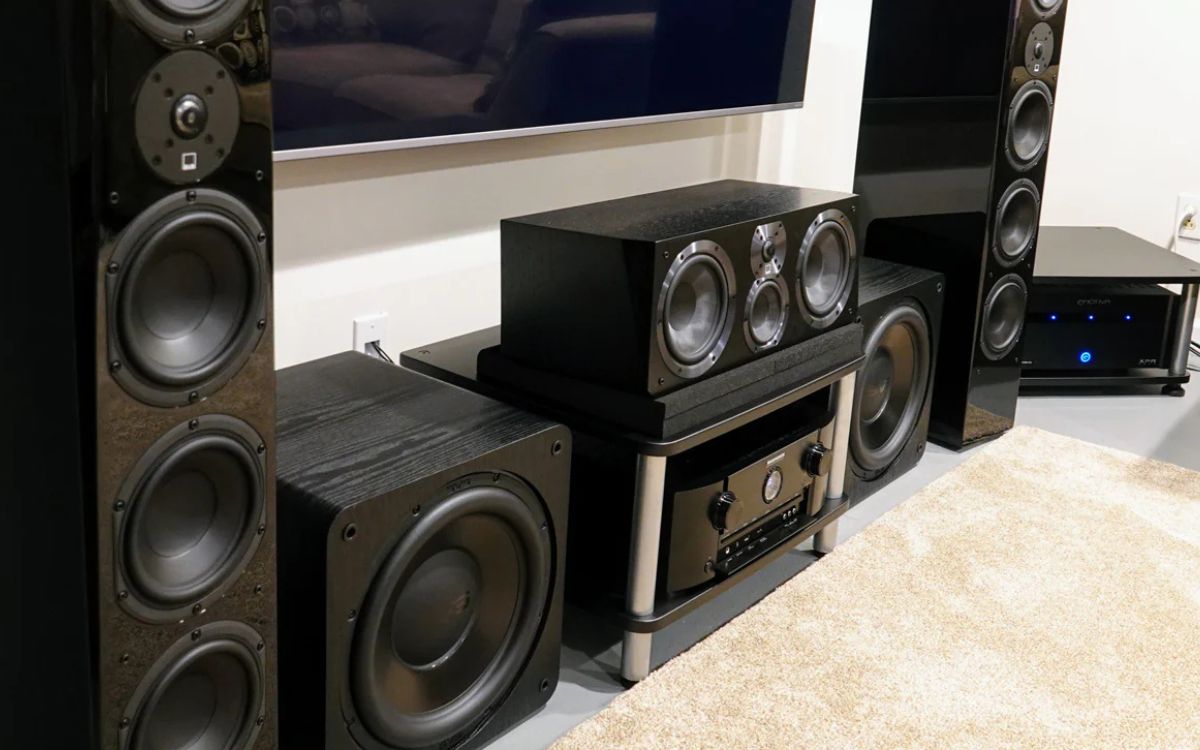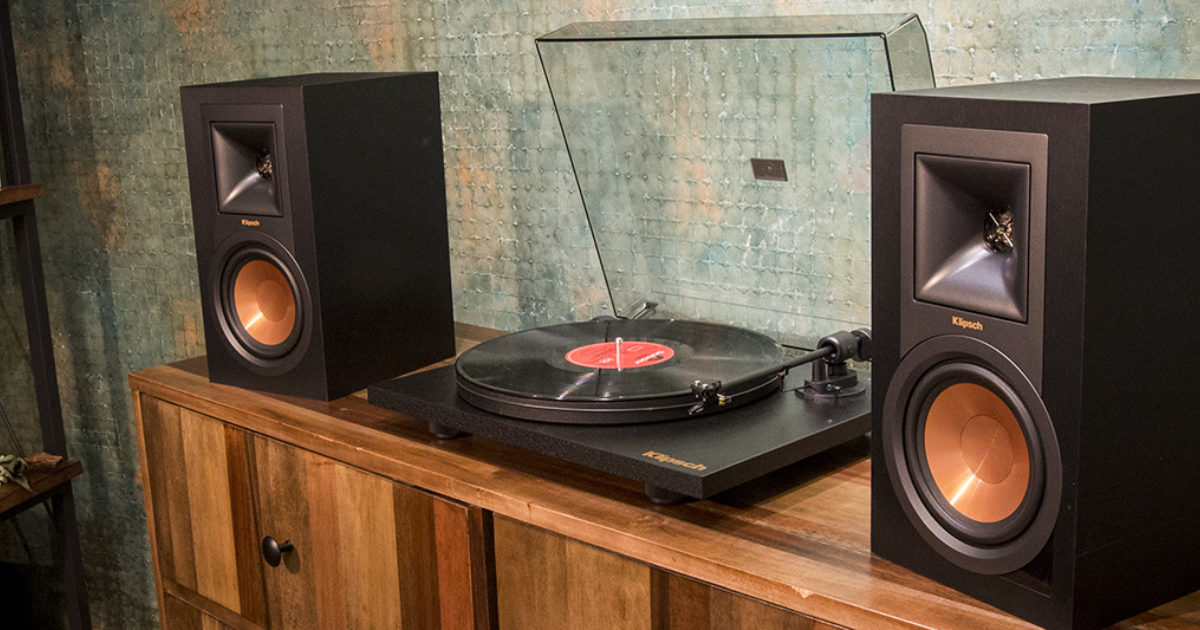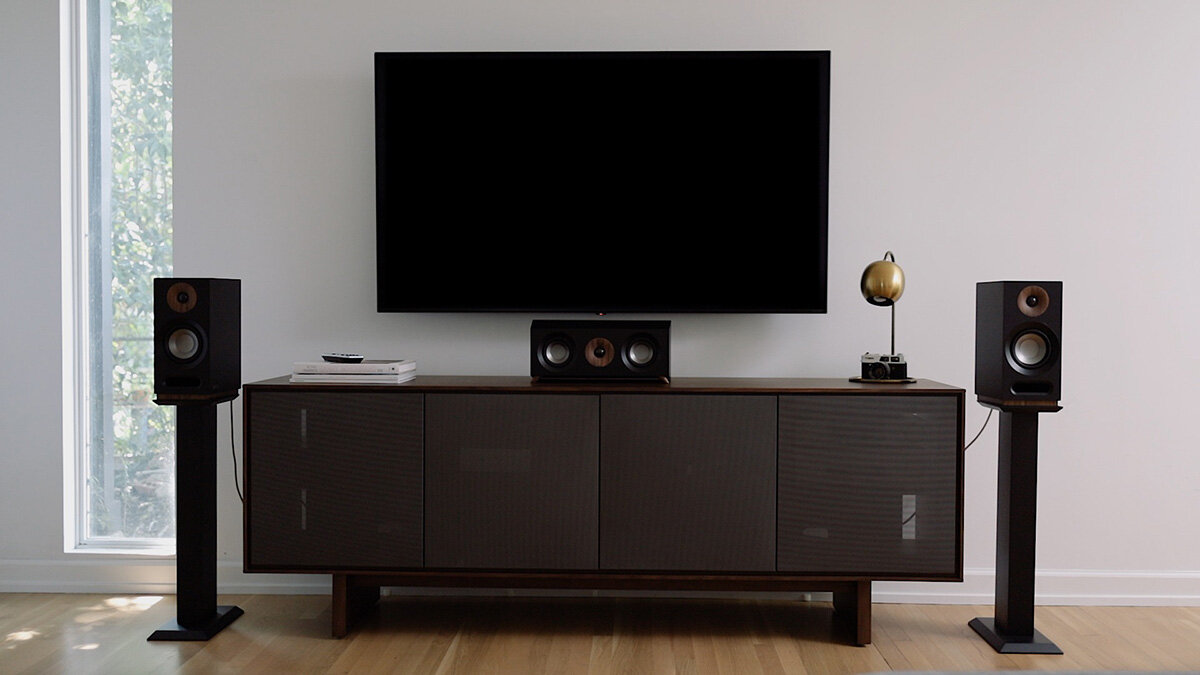Home>Production & Technology>Surround Sound>How To Hide Wires For Surround Sound


Surround Sound
How To Hide Wires For Surround Sound
Modified: January 22, 2024
Learn how to hide wires for surround sound systems and achieve a clean and clutter-free setup. Enhance your audio experience with seamless integration.
(Many of the links in this article redirect to a specific reviewed product. Your purchase of these products through affiliate links helps to generate commission for AudioLover.com, at no extra cost. Learn more)
Table of Contents
Introduction
Welcome to the world of surround sound! Whether you’re a movie enthusiast, a gamer, or a music lover, you know the importance of a stellar audio experience. Surround sound systems are designed to immerse you in sound from all directions, creating a lifelike and captivating audio environment. However, one aspect that many people overlook when setting up their surround sound system is the issue of wires.
While wires are necessary to connect your speakers and components, they can quickly become an unsightly mess, detracting from the overall aesthetic of your space. Not only do exposed wires look cluttered, but they can also pose a tripping hazard and make it difficult to clean or rearrange your furniture.
Fortunately, there are several options available for hiding surround sound system wires, allowing you to enjoy high-quality audio without the visual distractions. In this article, we’ll explore different strategies for concealing your wires, from simple DIY solutions to more advanced techniques.
Whether you’re a DIY enthusiast or prefer professional installation, there’s a wire hiding method that suits your needs and budget. Let’s dive in and learn how to achieve a clean and minimalist look for your surround sound system!
Why Hiding Wires is Important
When it comes to setting up a surround sound system, you want to create an immersive and visually appealing environment. While the focus is usually on the quality of the audio equipment and speaker placement, the presence of visible wires can quickly undermine the overall aesthetic. Here are a few reasons why hiding wires is crucial:
- Aesthetics: Exposed wires can be an eyesore, disrupting the clean and organized look of your room. They can create a cluttered and messy appearance, detracting from the beauty of your surround sound setup. Hiding the wires allows you to maintain a sleek and seamless look, enhancing the overall visual appeal of your space.
- Safety: Loose wires lying on the floor or hanging from walls can present a safety hazard. They can easily trip people or get tangled with other objects, leading to accidents or damage to your equipment. By concealing the wires, you eliminate potential safety risks and create a more secure environment.
- Flexibility: Concealing your surround sound system wires gives you the freedom to rearrange your room or move your components without the hassle of dealing with tangled cables. It allows you to easily change the setup without having to reorganize or adjust the wires each time.
- Professional appearance: Whether you’re setting up a home theater or a gaming room, a clean and professional-looking setup can elevate the overall experience. Hidden wires create a polished and high-end appearance, making your setup look well-designed and intentional.
- Reduced distractions: When you’re engrossed in a movie, gaming session, or music session, the last thing you want is to be distracted by a jumble of wires. By hiding the wires, you create a more immersive environment, allowing you to fully enjoy the audio experience without visual disturbances.
By taking the time to hide your surround sound system wires, you not only enhance the aesthetics of your space but also create a safer and more enjoyable environment. Now that we understand the importance of wire hiding, let’s explore some strategies to achieve a clean and professional look.
Planning Your Wire Hiding Strategy
Before you dive into hiding your surround sound system wires, it’s essential to have a solid plan in place. Consider the layout of your room, the location of your components, and the specific needs of your setup. Here are some key considerations when planning your wire hiding strategy:
- Identify wire routes: Start by mapping out the path that your wires will need to take from your audio/video components to your speakers. Take note of any obstacles such as furniture, walls, or doors that may require special attention and adaptation.
- Determine wire lengths: Measure the distance between your components and speakers to determine the length of wire you will need. It’s always better to have a little extra length to allow for flexibility and adjustments.
- Choose the right method: Depending on your preference and the construction of your space, there are several wire hiding methods to consider, such as in-wall concealment, wire tracks or raceways, cable sleeves, and wireless speaker systems. Choose the method that best suits your budget, skills, and overall goals.
- Consider future needs: Think about any potential changes or upgrades to your audio setup in the future. Will you be adding additional speakers or components? Take this into account when planning your wire hiding strategy to ensure that you have room for future expansion.
- Research local regulations: If you’re considering an in-wall wire hiding method, it’s important to check local building codes and regulations. Some areas may require permits or professional installation for in-wall wiring.
- Budget: Determine your budget for wire hiding. Some methods, such as wireless speaker systems, may be more expensive, while DIY options like cable sleeves may be more cost-effective.
By carefully planning your wire hiding strategy, you can ensure that you have a clear roadmap to follow and avoid any unexpected challenges during the installation process. Now, let’s explore some popular wire hiding methods to help you achieve a clean and organized look for your surround sound system.
Option 1: In-Wall Wire Concealment
If you’re looking for a sleek and seamless wire hiding solution, in-wall wire concealment is an excellent option. This method involves running your surround sound system wires through the walls, keeping them completely hidden from view. Here’s how to achieve in-wall wire concealment:
- Plan and prepare: Before you start, identify the wall where you intend to conceal your wires. Locate any studs or obstructions that may affect the installation process. Make sure you have the necessary tools, including a stud finder, level, drywall saw, and fish tape.
- Choose the right wall plates: To maintain a professional appearance, use wall plates specifically designed for in-wall wire concealment. These plates have openings that allow you to pass the wires through the wall while providing a clean and finished look.
- Measure and cut: Measure the length of wire needed to reach from your audio/video components to your speakers. Add a few extra inches to account for any adjustments or future changes. Using a drywall saw, cut a small opening near the baseboard or at the desired height for your wall plate.
- Run the wires: Using fish tape or a similar tool, carefully run the wires through the opening and into the wall. Guide the wires through the wall cavity and use caution to avoid any sharp objects or electrical wires.
- Secure the wires: Once the wires are inside the wall, use cable staples or other appropriate fasteners to secure them along the wall studs. This will prevent any movement or potential damage to the wires.
- Install the wall plates: Attach the in-wall rated wall plates over the openings, ensuring that they are securely in place. Pass the wires through the openings in the wall plates and connect them to your audio/video components and speakers.
- Finish the installation: After connecting all the wires, patch the small opening in the wall using drywall compound and sand it smooth. Paint the patch to match the surrounding wall, ensuring a seamless and integrated look.
In-wall wire concealment provides a professional and clean appearance, eliminating visible wires and creating a clutter-free space. However, it’s important to note that this method may require some DIY skills and potentially professional help, especially if you’re not experienced in working with electrical wiring or drywall. Always follow the proper safety precautions and consider consulting with a professional if you’re unsure about any aspect of the installation process.
Option 2: Wire Tracks or Raceways
If you don’t want to deal with the complexities of in-wall wire concealment, wire tracks or raceways offer a simple and effective way to hide surround sound system wires. Wire tracks are plastic or metal channels that can be mounted along the walls or baseboards, providing a discreet pathway for your wires. Here’s how to use wire tracks or raceways:
- Plan and measure: Determine the path you want your wires to take and measure the required length of wire tracks or raceways. Consider the layout of your room and the locations of your audio/video components and speakers.
- Choose the right wire tracks or raceways: There are various types and sizes of wire tracks available, so choose the one that suits your needs and matches your room’s decor. Some tracks are adhesive-backed, while others require screws for mounting.
- Prepare the surface: Clean the wall or baseboard surface where you plan to mount the wire tracks. Ensure that it’s smooth and free from any dust or debris.
- Mount the tracks: Using the appropriate method (adhesive or screws), mount the wire tracks along the planned route. Ensure that they are straight, level, and securely attached to the surface.
- Route the wires: Place and organize your surround sound system wires within the wire tracks. Depending on the track design, you may be able to snap them into place or use additional clips or brackets to secure the wires.
- Secure and hide the wires: Once the wires are in place, use zip ties or cable clips to secure them within the wire tracks. This will keep them neat and prevent them from slipping out or becoming tangled.
- Paint or camouflage: If desired, paint the wire tracks to match your wall color or use paintable tracks. This helps them blend seamlessly with the surrounding walls and further hides the presence of the wires.
Wire tracks or raceways are a versatile and affordable solution for hiding surround sound system wires. They are relatively easy to install and can be a great option for rental spaces or situations where you want a non-permanent solution. Keep in mind that while wire tracks provide a cleaner look than exposed wires, they are still visible, so consider their placement and ensure they do not obstruct the aesthetics of your room.
Option 3: Cable Sleeves and Cord Covers
If you’re looking for a quick and inexpensive solution to hide your surround sound system wires, cable sleeves and cord covers are worth considering. These flexible and durable materials provide a protective layer for your wires while effectively concealing them. Here’s how to use cable sleeves and cord covers:
- Assess your wire length: Measure the length of wires that need to be covered. Consider any curves or bends in the path to ensure you choose a cable sleeve or cord cover with sufficient length.
- Select the right product: There are various options available, including cable sleeves made of nylon or fabric and cord covers made of PVC or rubber. Choose the product that suits your aesthetic preferences and provides the necessary level of protection.
- Prepare the wires: Depending on the product you choose, you may need to gather your wires together and secure them with zip ties or Velcro straps. This helps keep the wires organized and makes it easier to insert them into the cable sleeve or cord cover.
- Insert the wires: Open up the cable sleeve or cord cover and carefully guide your wires through the opening. This can be done by either threading the wires through the sleeve or opening the cover to insert them.
- Organize the wires: Once the wires are inside the cable sleeve or cord cover, arrange them neatly to ensure a tidy appearance. Use zip ties or cable clips at regular intervals to secure the wires within the sleeve or cover.
- Position the cable sleeve or cord cover: Place the cable sleeve or cord cover along the desired path, making sure it is discreetly positioned against the wall, baseboard, or floor. You can use adhesive tape or mounting brackets to secure it in place if necessary.
- Trim and conceal: If the cable sleeve or cord cover is longer than needed, trim off the excess length with scissors or a utility knife. Then, tuck any visible ends or openings behind furniture or along the edges of the room for a more seamless appearance.
Cable sleeves and cord covers offer a simple and versatile solution for hiding surround sound system wires. They are generally easy to install and can be found in various sizes and colors to match your room decor. While cable sleeves and cord covers provide a practical and visually appealing solution, keep in mind that they may not offer the same level of protection as in-wall concealment or wire tracks. They are best suited for temporary setups or situations where you prioritize convenience and affordability.
Option 4: Wireless Speaker Systems
If you want a wire-free audio experience and a truly seamless setup, wireless speaker systems are an excellent choice. These systems eliminate the need for any physical wires connecting your speakers to the audio source, providing freedom and flexibility in placement. Here’s how wireless speaker systems work:
- Select a wireless speaker system: Research and choose a wireless speaker system that meets your audio needs and budget. There are various options available, from compact Bluetooth speakers to dedicated wireless surround sound speaker systems.
- Set up the audio source: Connect the audio source, such as a receiver, soundbar, or multi-room audio system, to your wireless speakers. This can be done through Wi-Fi, Bluetooth, or a proprietary wireless connection.
- Position the speakers: Place your wireless speakers in the desired locations throughout the room. Since they don’t require any wired connections, you have the freedom to position them wherever you prefer, whether it’s on bookshelves, mounted on walls, or placed on stands.
- Pair the speakers: Follow the manufacturer’s instructions to pair and synchronize your wireless speakers with the audio source. This typically involves a simple pairing process using buttons or a smartphone app.
- Configure the settings: Once the speakers are paired, you may need to adjust settings such as speaker volume, balance, or EQ to achieve the desired audio quality. Refer to the user manual or software settings provided by the manufacturer for guidance.
- Test the wireless connection: Play audio through your wireless speaker system to ensure a stable and reliable wireless connection. Verify that there is no significant delay or audio dropout that could impact your listening experience.
- Enjoy wire-free listening: With your wireless speaker system set up, you can now enjoy high-quality audio without the hassle of visible wires. Sit back, relax, and immerse yourself in your favorite movies, games, or music.
Wireless speaker systems offer convenience, flexibility, and a clutter-free setup. They are an ideal solution for those who prioritize simplicity and prefer to avoid the complexities of wire hiding. However, it’s essential to consider the range and connectivity limitations of wireless systems, as factors such as distance, interference, and signal strength can impact performance. Be sure to choose a reputable wireless speaker system that offers reliable connectivity and meets your audio needs.
Tips for a Clean and Professional Wire Hiding Job
When it comes to hiding wires for your surround sound system, following these tips will help ensure a clean and professional-looking installation:
- Plan and measure: Take the time to plan your wire hiding strategy and measure the required wire lengths accurately. This will help avoid unnecessary cable slack or tightness, resulting in a neat and organized setup.
- Label and organize: Before installing your wires, label them at both ends to easily identify which wire connects to which component or speaker. Organize the wires in a logical manner, grouping them together for a tidy appearance.
- Follow safety guidelines: When working with wires, always prioritize safety. Turn off the power to your audio/video components before making any connections or adjustments. If you’re unsure about any electrical work, consult a professional to avoid any potential risks.
- Conceal wires behind furniture: Strategically place furniture such as sofas, bookshelves, or cabinets near your audio/video components to naturally hide the wires behind them. This can help create a cleaner and more visually appealing setup.
- Use cable management products: Invest in cable management products such as Velcro ties, cable clips, or cable sleeves to keep your wires organized and tangle-free. These small accessories can make a big difference in achieving a professional wire hiding job.
- Hide wires along baseboards: If in-wall concealment or wire tracks are not feasible, consider hiding wires along baseboards. Use adhesive-backed cable clips or baseboard cable channels to secure the wires along this discreet pathway.
- Paint or camouflage wires: If your wires are partially visible, consider painting them to match the color of your walls or floors. This can help them blend in and become less noticeable, especially if they need to cross a certain area where concealing them completely is not possible.
- Regularly check and maintain: Periodically check your wire hiding setup to ensure that the wires are secure and not at risk of becoming exposed or tangled. Reorganize or readjust them as needed to maintain a clean and professional appearance.
- Consider professional installation: If you’re unsure about tackling wire hiding yourself or want a highly polished look, consider hiring a professional installer. They have the expertise and tools to handle complex wire hiding projects, ensuring a flawless and professional result.
Following these tips will help you achieve a clean, organized, and professional wire hiding job for your surround sound system. Remember to prioritize safety and choose the method that best suits your needs, skill level, and budget. With a little bit of planning and attention to detail, you can enjoy a seamless audio experience without the visual distractions of exposed wires.
Conclusion
Setting up a surround sound system can greatly enhance your audio experience, but the presence of visible wires can detract from the overall aesthetic of your space. By hiding your surround sound system wires, you create a cleaner, safer, and more visually appealing setup.
From in-wall wire concealment to wire tracks, cable sleeves, and wireless speaker systems, there are various options available to meet your wire hiding needs. Each method offers its own advantages and considerations, allowing you to choose the one that aligns with your budget, skills, and desired level of professional appearance.
Before beginning your wire hiding project, it’s essential to plan your strategy, considering factors such as wire routes, wire lengths, and potential future changes. Taking the time to organize your wires, follow safety precautions, and invest in cable management products will help you achieve a clean and professional-looking wire hiding job.
Remember to regularly check and maintain your wire hiding setup to ensure that everything remains secure and visually appealing over time. If you’re unsure about any aspect of wire hiding or want a highly polished result, consider consulting a professional installer who can handle the task with expertise.
By hiding your surround sound system wires, you not only enhance the aesthetics of your space but also create a safer and more enjoyable environment. So, go ahead and take the necessary steps to eliminate visual distractions and fully immerse yourself in the captivating world of surround sound audio.











